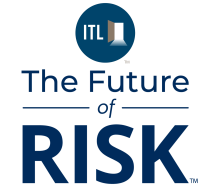Enterprises are engaging with agentic AI in five distinct ways:
- Agent-Open: Developers are building AI agents on open-source Agent Development Kits (ADKs) such as LangChain, LLamaIndex (Meta), Haystack (Deepset), and Transformers Agents (HuggingFace).
- Agent-Closed: Developers are building AI agents on "big-software" ADKs from the likes of Microsoft, IBM, Salesforce, and SAP.
- Data-Small: Data engineers are building data pipelines on which to train and inference proprietary AI agents using ADK-like tools from mainly Databricks and Snowflake. I call this "small" because only a small amount of enterprise data is typically fit for consumption by AI.
- Data-Big: This approach makes major investments in ontologizing and unifying the full corpus of enterprise data to be consumable by AI at scale at some point. Some enterprises are attempting this work themselves; others are paying Palantir to do it with their Foundry platform. These are big, hairy engagements; think: SAP enterprise resource planning (ERP) of AI.
- Expert Agents: The first four approaches are for building agents to streamline work and workflows for productivity and operational efficiency. An expert agent is, for example, the clinician in a clinical workflow, i.e., the cardiologist or nephrologist. (Yes, it's coming.) These expert agents are by their nature GPU-chip intensive, andm as NVIDIA makes the GPU chips powering 90% of AI, their CUDA, NeMo, and Clara tools are by far the most cost-effective option for building expert agents.
Enterprise leaders seem to be asking two questions, the first of which is, "Can we connect an agent--however it's built--to our core systems?"
Google has built--and open-sourced--over 600 connectors against the likes of Microsoft Office, Adobe Acrobat, Salesforce, Workday, and ServiceNow, enabling agents of any origin to understand the data models of these core enterprise systems. These connector models are trained to understand different data elements, so in a Salesforce customer relationship management (CRM) dataset, for example, the connector understands "What's an account?", "What's an opportunity?", "What's a product?" It also knows when to access data, maintaining permissions "seeing" only what it's authorized to see.
The takeaway: You don't need to use Big Software ADKs to build agents interacting with Big Software datasets.
The second question is, "Can we have agents of different origin on the same team? Will teams built on one ADK work with teams built on another?"
Anthropic's open-source Model Context Protocol (MCP) has rapidly become the industry standard for agent-to-tool, and agent-to-data integrations. For agent-to-agent communications, the standard is Agent Protocol (AP).
Recently, Google, in league with 50 technology and consulting partners, announced the new Agent-to-Agent (A2A) protocol. A2A offers significant upgrades over AP including enterprise-grade security by default, support for long-running and asynchronous tasks, modality-agnostic communication (AP is text only, A2A adds images, audio, video), and the biggie: vendor-neutral and framework-agnostic design. This reduces vendor lock-in and allows organizations to compose best-of-breed agent networks easily.
It looks like A2A, open-source and available by the end of the year, will become the industry standard for agent-to-agent communications working seamlessly with MCP on agent-to-tool, and agent-to-data interactions.
The takeaway: McKinsey pegs the current market for AI products and services at $85 billion, forecasting growth to a low expectation of $1.6 trillion and a high expectation of $4.7 trillion by 2040. That sets the over/under line at $3.2 trillion: Bet the over.








